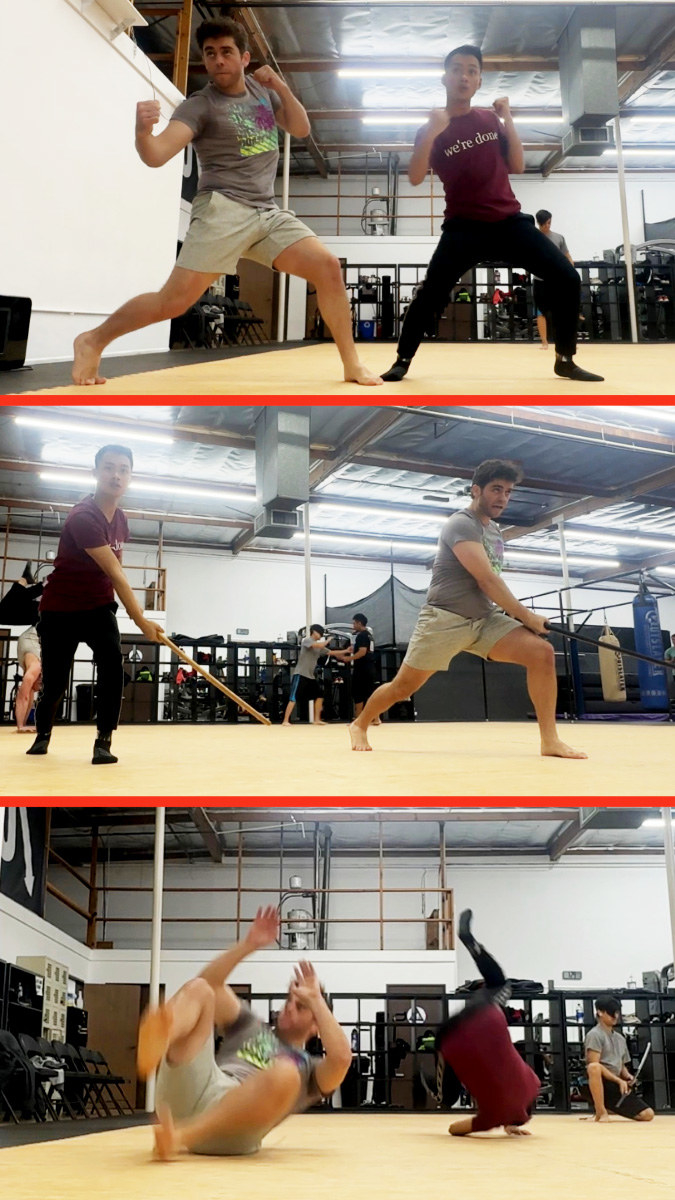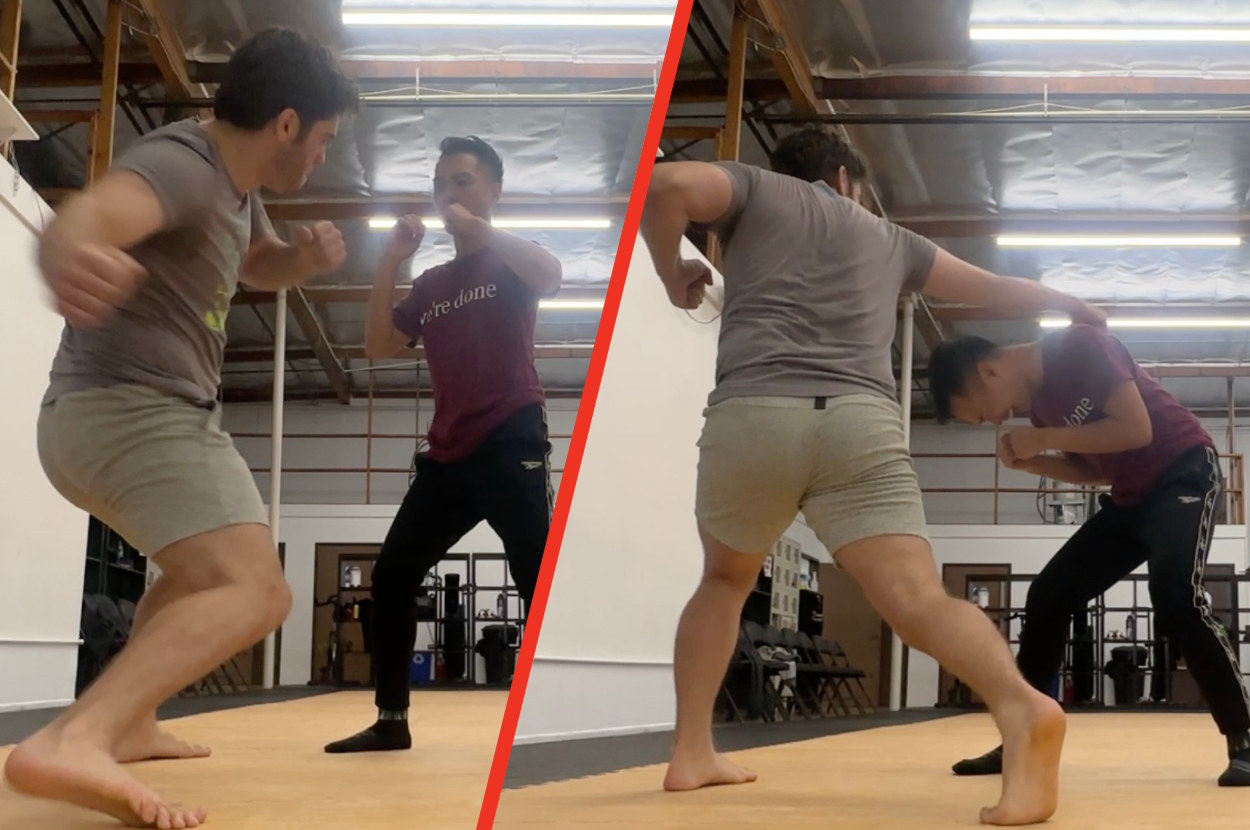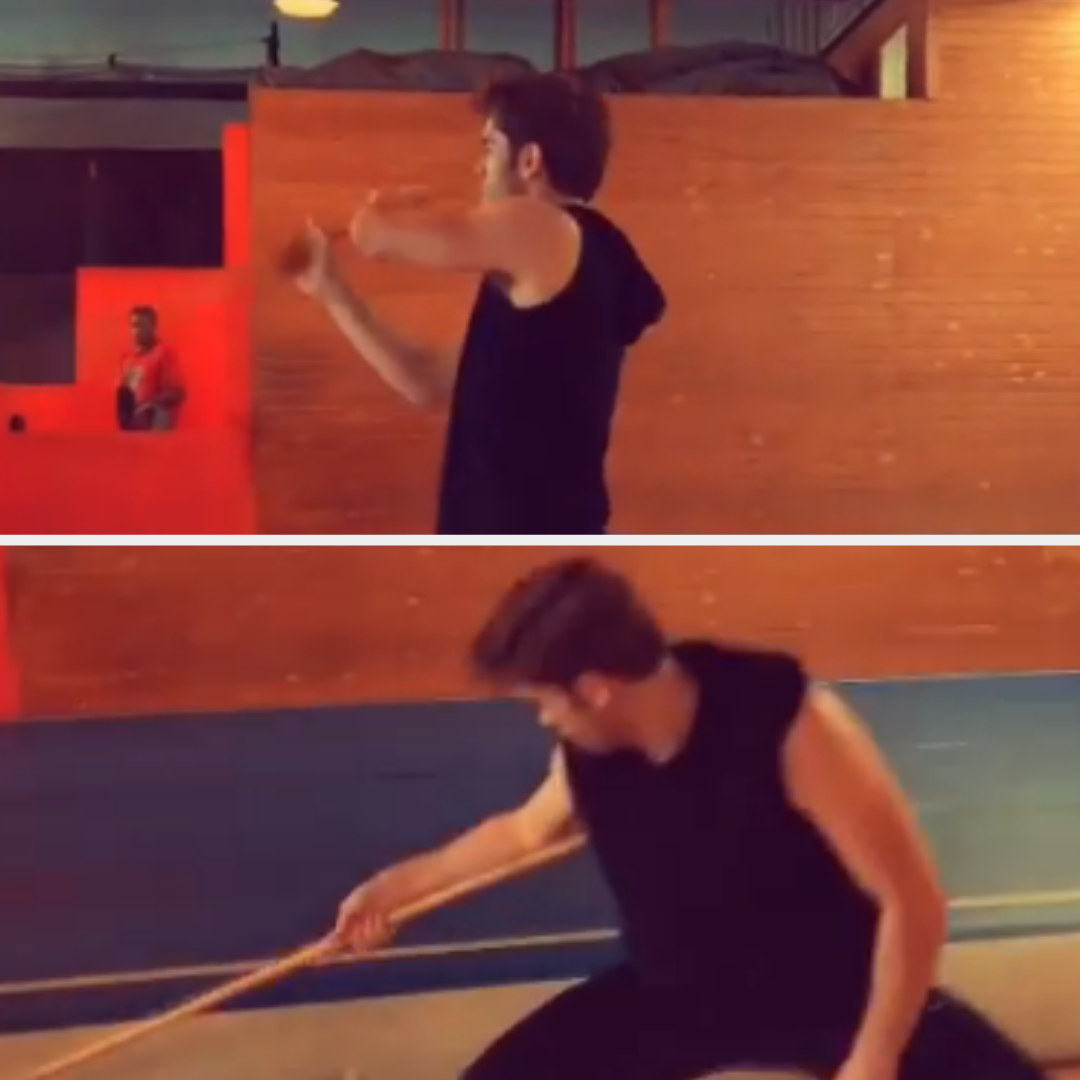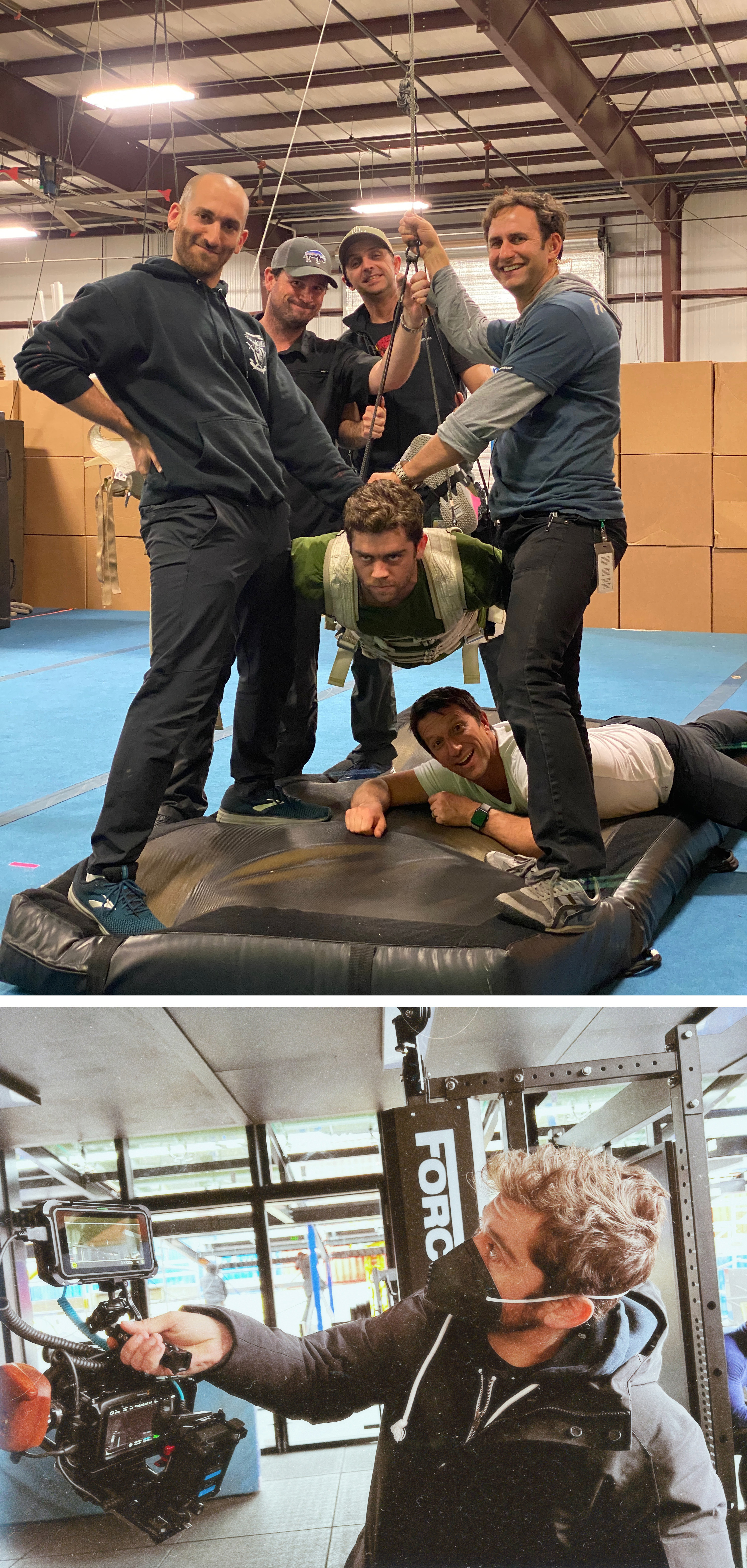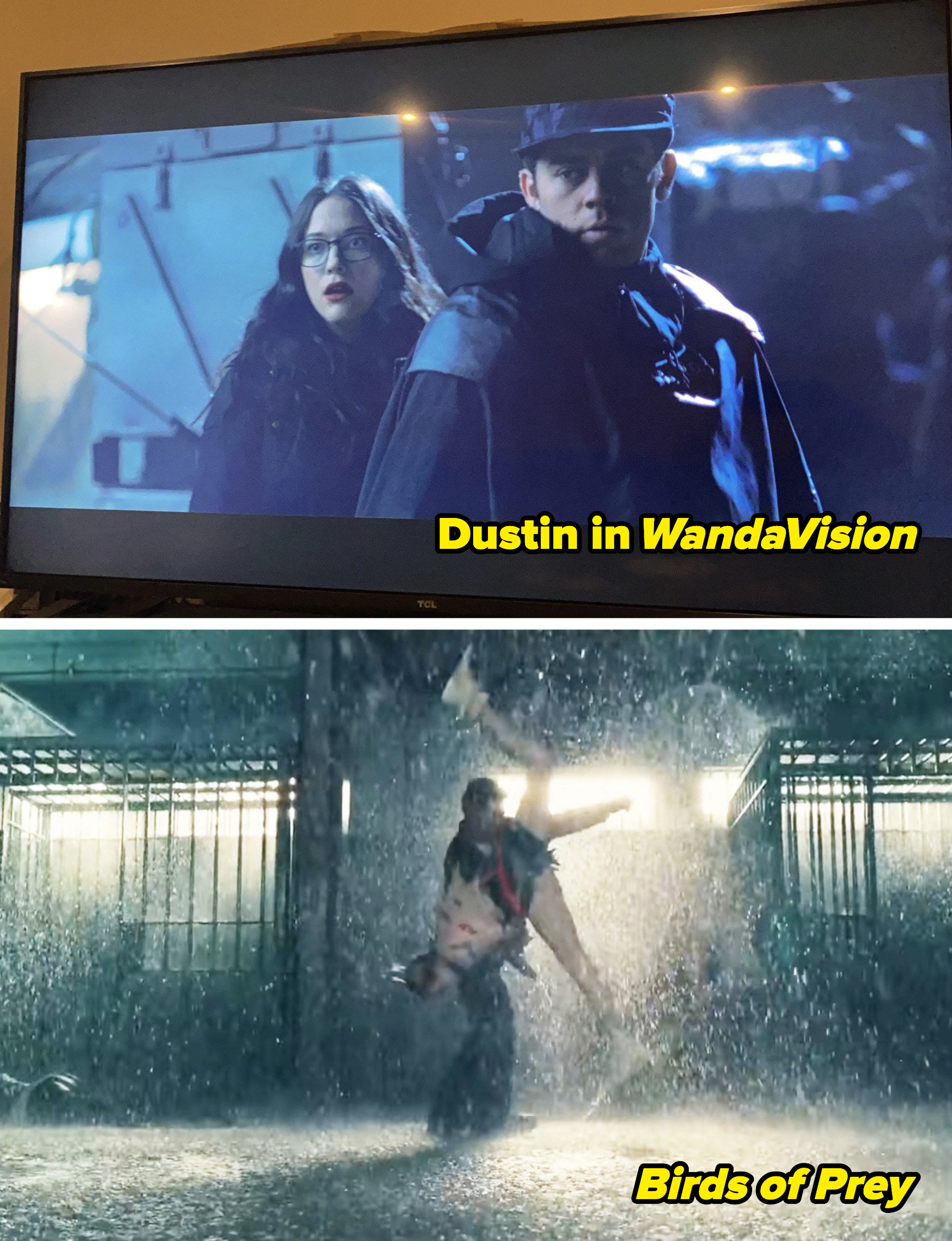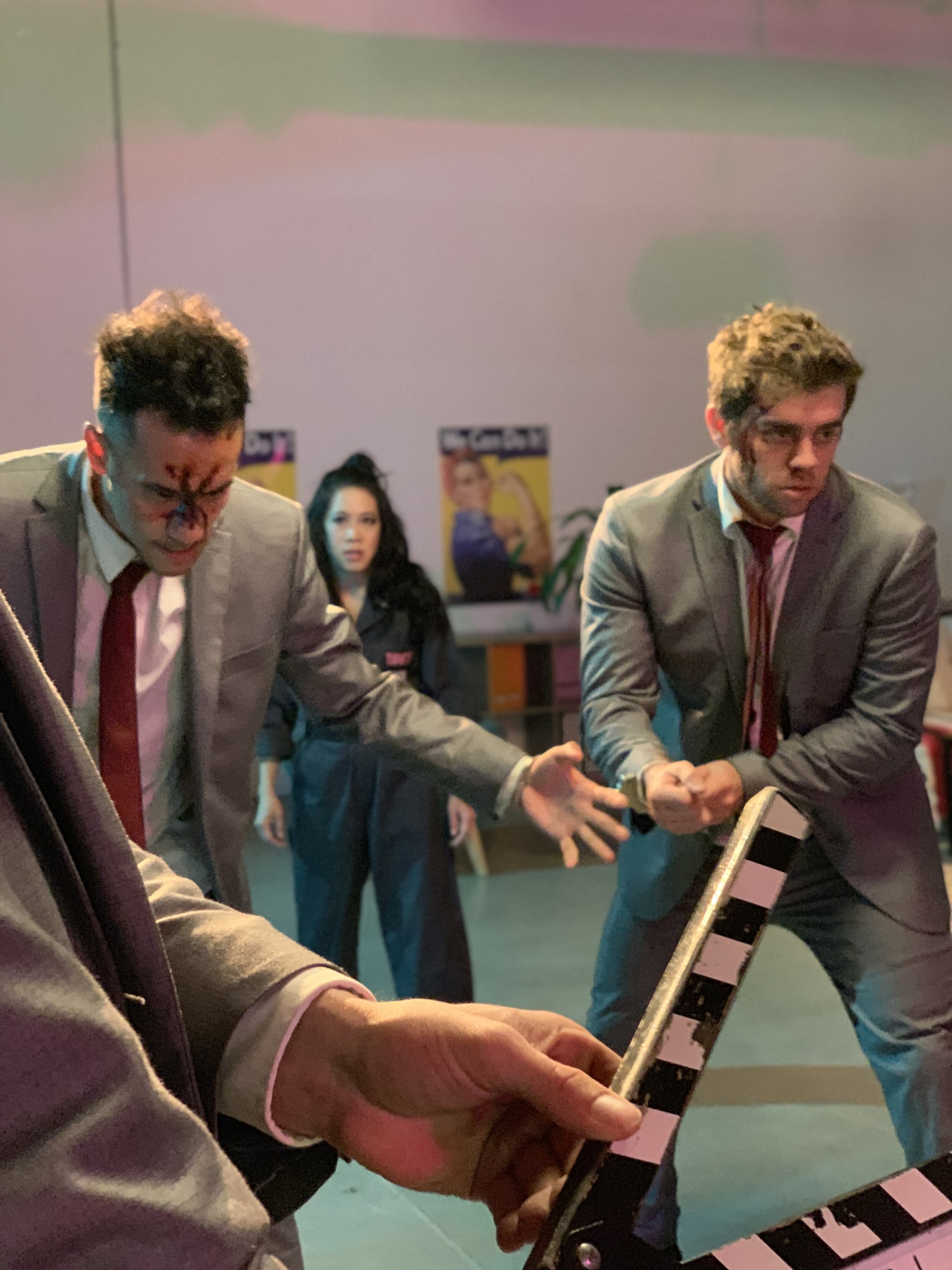“A lot of actors want to immediately dive into weapon work or extreme falls,” Dustin explained, “but it’s so important to have control of your own body, and be precise with it.” And that’s why our training session was mostly foundational stunt moves: throwing/receiving stunt punches, basic sword combat, spinning, and rolling over the shoulder forwards and backwards. That’s why body control and spatial awareness in stunt fighting is key." “As a stunt person, a lot of times you have so much power in a scene,” Dustin said. “If a punch is making contact, it’s not a full-contact hit. It’s more of a tap. But it’s the stunt person’s job is to make it believable, whether we’re hitting or getting hit. And people don’t think the acting part of stunts is a physical activity, but it sort of actually is.” “Our job as a stunt person is to make the actor look good,” Dustin said. And damn, did I look good! Above, Dustin demo’d the fight combo I did with him at its intended speed. Yeah…my stunt double will be dealing with that. “I started with the technical — if I’m swinging, I have to position my hand in a way that my knuckles are facing away from the truck; otherwise, they’ll get crushed between my body and the truck. So, I turned my knuckles the other way. The director is prepping to call the shot, I’m getting ready and trying the move out before they call action, and then they call it. And I was ready.” “So, in between work, I prioritize staying physically active. I personally like to identify my weaknesses and proactively improve them. I mean, I might get a gig where I’m asked to walk a thin plank, so I know I need to strengthen my balance. In stunt work, you never really know what’s gonna come your way.” “There’s a lot of collaboration, and trust, involved in stunts that most people aren’t aware is even happening. Huge stunt scenes are usually written into the script in broad terms, and it’s the stunt coordinator who comes up with a more specific vision for these scenes. The screenplay might say things like, ‘There’s a car chase. He gets out of the car, jumps over the fence, the hero catches up to him, and they fight.’ Well, what does that fight look like? What is that car chase like? What wires, if necessary, are involved? The stunt coordinator works with the fight coordinator, the drivers, and the stunt riggers to create these beats.” “And we usually want previs to feel really polished, which is why we’ll build stuff — cars, walls, windows, whatever — out of boxes. And it ranges from being filmed on a phone to being ‘properly’ filmed, like we’re shooting our own movie. The more finished it looks, the better.” “It was the first time on a set I truly felt like it was known that I was going to be in the film. And working with Margot Robbie was a great experience — she was friendly, professional, and just willing to play.” “Even though my scene was cut from the final version of the film, a Hollywood rite of passage, the experience still means so much to me. I’ll never forget sitting in my car after the shoot, sobbing over the money I made from that job. It felt good.”
